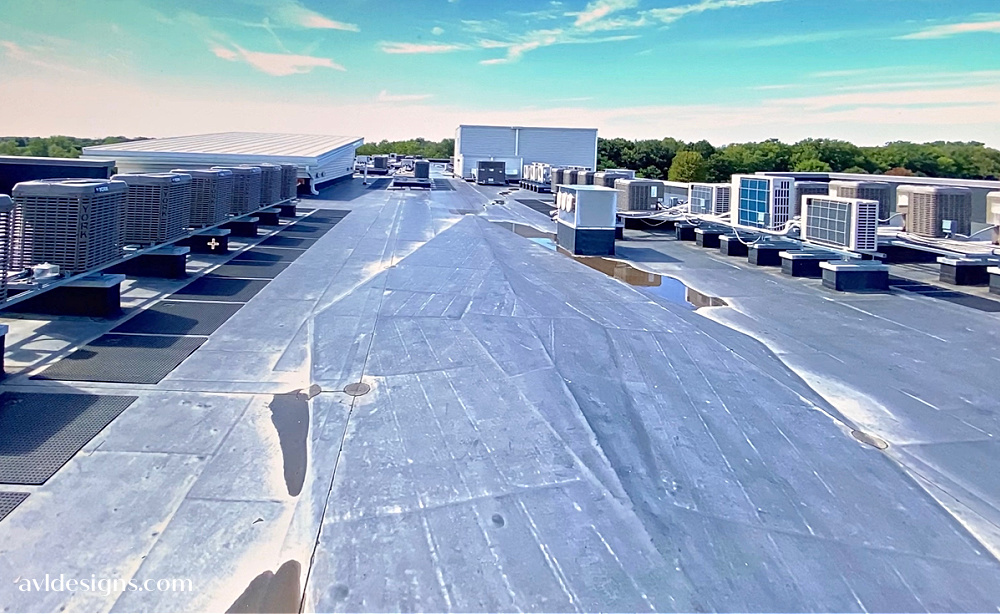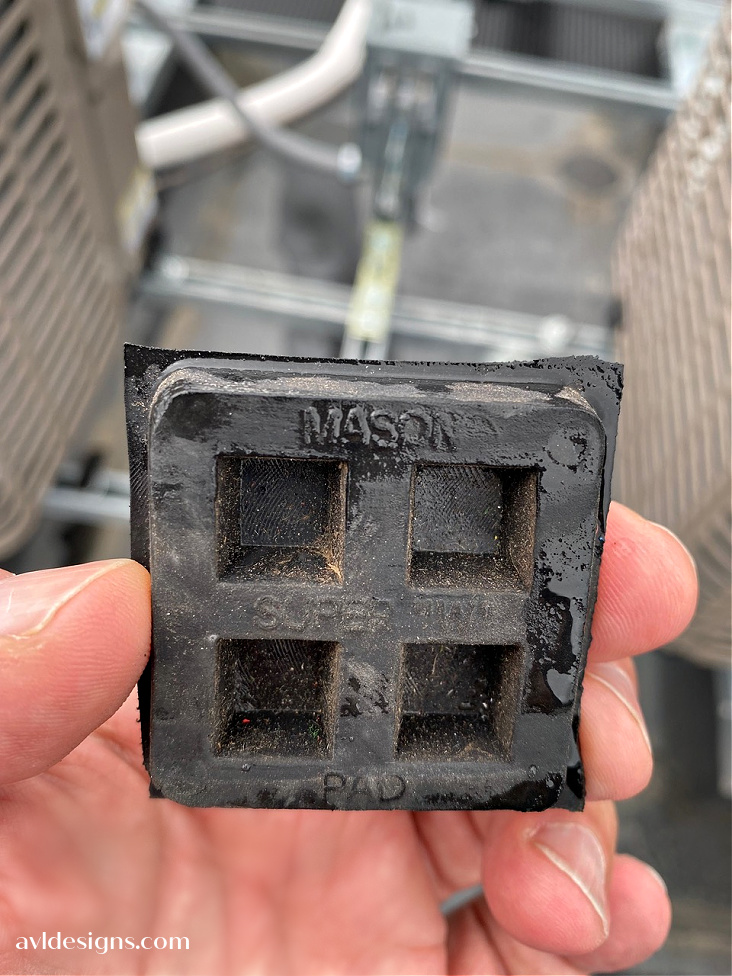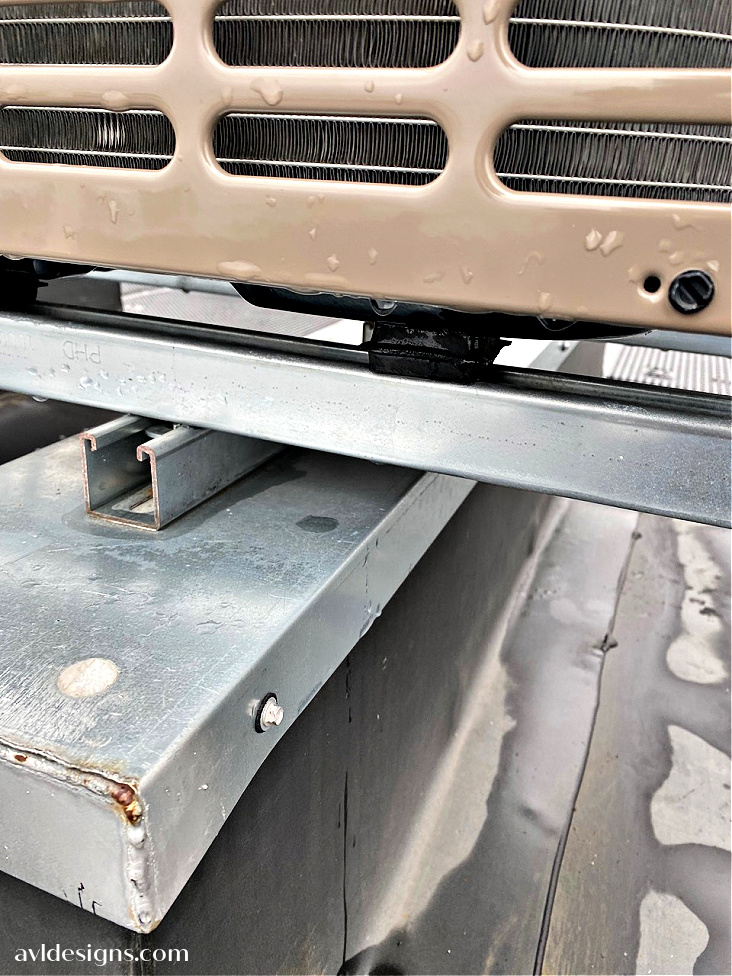
I wanted to do a video about the most difficult thing about soundproofing a home studio. We could call it “What’s That Noise?” So, what’s the big deal about that? Well, oddly enough, this story starts on the roof of an apartment building. If that sounds weird, check out our “Kokomo Hum” video; then you will understand what I’m talking about.
The most challenging part with a home studio is low frequency control. You can get isolation for vocals and that type of thing somewhat easily. However, when you have base drum, bass guitar, any low frequency sounds that you don’t want seeping into the rest of the house — or low frequency noises from upstairs that you don’t want filtering into your studio (which you may not hear with your headset mic) — there is the challenge!
For the backstory, listen to The Kokomo Hum.
You will notice in the soundproofing video that I am wearing headphones. Computer speakers typically do not pick up the elusive low frequency sounds that we are featuring so, when watching the video, you should put on a set of good headphones or in-ears to be able to hear the type of low frequencies.
Next, and unrelated to that, we were called to come to an apartment building. Residents were complaining about a humming noise that was occurring in several apartments in the same complex. It was a 3-story apartment building with dozens and dozens of apartments that were not hearing this noise. For those residents who were hearing it, though, the noise was annoying and impossible for them to track down.

So, we were called in to solve the mystery and tell them how to get it to stop. (You will want to go over to our soundproofing video now, wearing headphones, to get a much better perspective on this.)
And just so you know, we actually are going to get to why this has something to do with soundproofing a home studio and many other things. So, we arrived at the apartments where the hum was occurring, and we took a look at the roof above them. It was lined with air conditioning units — dozens and dozens and dozens of them. And they were all mounted the same way. They were mounted to a rail, sitting on another rail, sitting on a roof. They are just air conditioning units like you may have outside of your house. Now the ones outside of your house don’t do this into your house or you would probably leave your home.
So we discovered the air conditioning units were how the noise was getting there. The next step was to find what was causing it in the first place. So when went into the apartments that were having the noise problem, we definitely heard the noise.

We went up on the roof and, when you’re walking around the roof you don’t really hear it, but you feel it in your feet. When you would get your ear up really close to one of these air conditioning units — really, really close – you could hear the noise. When you would get your head down lower towards the bottom, it would go away. On the roof, you could hear it and feel it in the floor. Now what we got into is that we found that the units were mounted on rubber vibration isolators. They have a high enough deflection that typically 48 Hertz wave, which is what we were hearing, would be damped by them.
However, the problem was that they had them sitting on rubber vibration isolators. That seems pretty good, other than they could fall off the rail, which is a whole nother issue. The problem turned out to be this simple. They fastened them to the rail with an angle bracket that tied them to the rail.

So a single screw in four places on each unit was enough to put the unwanted low frequency noise into the apartment downstairs. We disconnected it from the rail and the result in the apartment downstairs was: no noticeable noise.
When it comes to doing home studios, the likely challenge will be => vibration.
Note: if you’re listening carefully to the video on good headphones, you can hear that it’s still there, but we had a 24 DB drop in level by simply disconnecting four screws. The takeaway is that when you get into doing home studios the challenge you are most likely to face is vibration.
When you try to do vibration isolation, no matter how you go about it, there are a lot of challenges. The first challenge is physical contact. If your walls are tied to your joists in the basement, you are going to have some issues. In this apartment scenario, there was other stuff going on that was kind of unusual and not easily understood. The entire roof here had many air conditioning units. They were all over the place. But there was only one apartment in the building that had the noise interference going on.
So the question then is why, and it has to do with deflection and flexibility of the roof system. So, it was just the magic of math that in a particular spot up there in the roof, you ended up with this situation where all the right things came together, causing this frequency to show up in that apartment. And it was a little bit in the hallway outside it, but the neighboring apartments weren’t getting it. When we turned on all these other units, this was the unit that was for the apartment we were working on. When we turned on the other ones, it hardly changed at all. Uh, the other ones could activate it.
However, it didn’t matter which one on the rail did it. It was just this thing where this one place was a problem. So when people talk to us about designing a home studio with isolation or any kind of isolation, the challenge is always, how do you prevent isolation vibrant from occurring?
Do you know we are on YouTube? Stop by; subscribe and you will be notified when new videos post.
Copyright AVLDesignsInc 2021+
